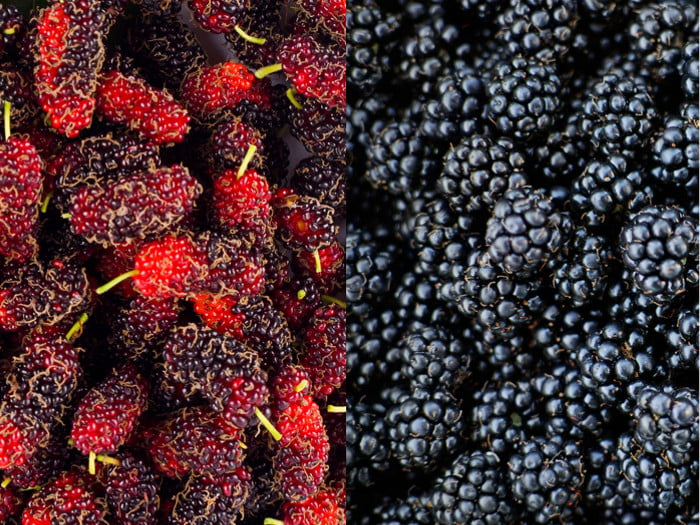The difference between mulberry vs blackberry is subtle in some ways and very obvious in others.
Mulberry vs Blackberry
While mulberries and blackberries may look similar, there are some key differences to understand before consuming these berries.
Mulberry
- Mulberries belong to the Morus genus and grow on deciduous trees that are native to Europe and Asia, and they are not technically considered berries.
- Mulberries tend to be slightly larger than blackberries and will be oval in shape, bearing the typical color of reddish-purple. The juice of mulberries is notorious for staining the skin, teeth, hands, and clothes, whereas blackberries do not have the same natural pigments in the juice. [1]
- Mulberries come in a variety of colors, including white, black, and regular (reddish-purple).
- In terms of health benefits and nutrients, mulberries contain vitamin A, vitamin K, dietary fiber, antioxidants, and various anthocyanins.
- Mulberry trees are famed in China, where they provide the main food source for silkworms.

Do you like mulberries more or blackberries? Photo Credit: Shutterstock
Blackberry
- Blackberries belong to the Rubus genus and are native to South America and certain temperate parts of the northern hemisphere. [2]
- In terms of shape, they can be quite round when small, but become more oval in shape as they grow larger. They are small to medium-sized berries that grow on a blackberry bush
- These berries are considered true berries, unlike mulberries, and have a very dark color, somewhere between deep purple and black.
- With high levels of both vitamin C and numerous antioxidants, blackberries are great for the immune system. [3]
- They also have a sweet and tart flavor, making them very popular for desserts.
